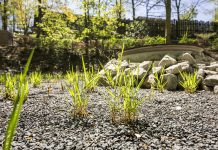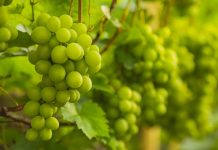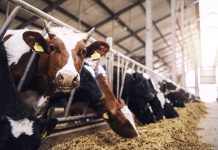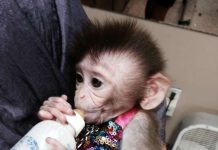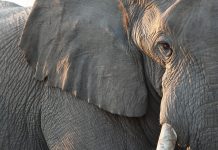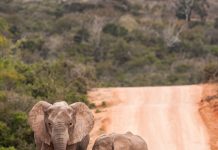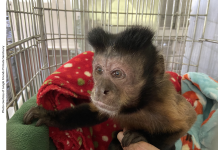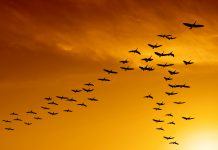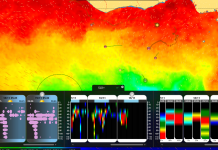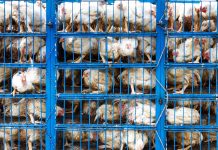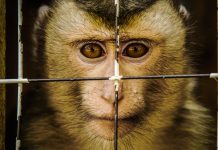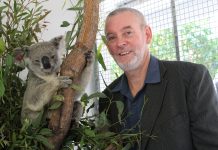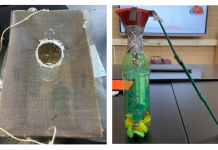Open Access Government produces compelling and informative news, publications, eBooks, and academic research articles for the public and private sector looking at health, diseases & conditions, workplace, research & innovation, digital transformation, government policy, environment, agriculture, energy, transport and more.
Home 2025
Archives
LIFE4ZOO: Sustainable water circulation in zoos
LIFE4ZOO is a project dedicated to sustainable water circulation for the future of zoos, as explained by experts Tomáš Lederer, Petr Kvapil and Paola Sepúlveda-Ruiz.
Grape extracts to prevent the use of antibiotics in farmed animals
Learn about the NeoGiANT project, which focuses on the antimicrobial and antioxidant properties of grape extracts to prevent the need for antibiotics in farmed animals.
Primate exposure to anthropogenic pollutants: Interactions with the gut microbiome and neuroendocrine SYSTEM
Michael Wasserman of Indiana University discusses interactions among the chemical exposome, microbes, and hormones in wild primates.
The history of bird photography: What can it teach us?
The research of Karla McManus, Associate Professor at the University of Regina, explores the history of bird photography and discusses its lessons, including the evolving technology of photography and the printing press.
Feline coronavirus and feline infectious peritonitis (FIP) – Russian roulette for your pet
Utilising Machine Learning on clinical datasets could help to crack the enigma of feline infectious peritonitis diagnosis.
Amino acid nutrition: A vital foundation for canine and feline health
Elizabeth Morris, Ph.D. and Julia Guazzalli Pezzali, DVM, MS, Ph.D., emphasize that amino acid nutrition is a crucial foundation for the health of both dogs and cats.
Primate exposure to anthropogenic pollutants: An overlooked conservation concern
Michael Wasserman of Indiana University discusses research on wild primate exposure to endocrine disruptors, such as pesticides, flame retardants, and phytoestrogens.
The national animal nutrition program: Digital – editable – perennial – accessible
The National Animal Nutrition Program (NANP) aims to enhance animal nutrition and feeding management while actively addressing concerns shared by livestock producers, environmentalists, and policymakers both nationally and globally. Here, they share insights about their work.
Welfare of pet primates for sale in the United States
Dr. Melissa Seaboch, Professor and Department Chair at Salt Lake Community College, charts the welfare of pet primates for sale in the United States.
Analyzing the rhetoric behind trophy hunting narratives
Jens Ulrik Hogh and Stephan Wunderlich from the International Council for Game and Wildlife Conservation (CIC) discuss public perceptions of trophy hunting.
Conserving elephant populations: Not without consultation
Global North and South when it comes to conservation, human rights and climate protection, particularly concerning elephant populations.
The pet primate trade in the U.S.
Dr Melissa Seaboch, Professor and Department Chair at Salt Lake Community College, discusses the challenges regarding the pet primate trade in the U.S., including its impact on animal welfare and owners and the complexity of regulations.
Electric-field nanobubbles: Re-engineering water treatment
Niall J. English, from the University College Dublin, School of Chemical and Bioprocess Engineering, discusses electric-field generated nanobubbles, including re-engineering water treatment – and beyond.
Time to strengthen and enforce the north american migratory bird treaty act
The number of migratory bird populations is declining; Keith Hobson, professor and research scientist at Environment and Climate Change Canada and Western University, outlines the importance of updating conventions to protect these vulnerable species.
How Tun-AI technology can be used to estimate tuna biomass
Satlink, a leading buoy manufacturer, has partnered with Komorebi AI researchers to develop Tun-AI, a machine-learning protocol that contextualizes echo-sounder data from buoys to estimate tuna biomass, shaping the future of fishery science.
Welfare economics: Reducing animal suffering at negligible costs
Yew-Kwang Ng, Emeritus Professor from the Department of Economics, at Monash University in Australia, argues the case for reducing animal suffering at negligible costs to human beings.
Moving past animal experiments to understand human neurological disease
Richard J. Miller, PhD, Professor Emeritus of Pharmacology at Northwestern University Feinberg School of Medicine, says that the belief monkeys and other animals are essential for performing translationally useful research for human neurological disease is outdated and incompatible with 21st-century science.
Navigating koala conservation challenges with advanced tech and game-changing vaccine research
Discover the intricate tale of koala survival, from habitat struggles to the rise of Chlamydia vaccines, in this exclusive interview with Professor Peter Timms from The University of Sunshine Coast, Australia.
Youths’ solutions to local invasive species
Educating students about real-world, issues such as local invasive species aims to encourage wider engagement with STEM.
Nutritional management of aging pets
Morgan A. Key from Hill’s Pet Nutrition outlines the changes associated with aging pets and how nutrition can help.

